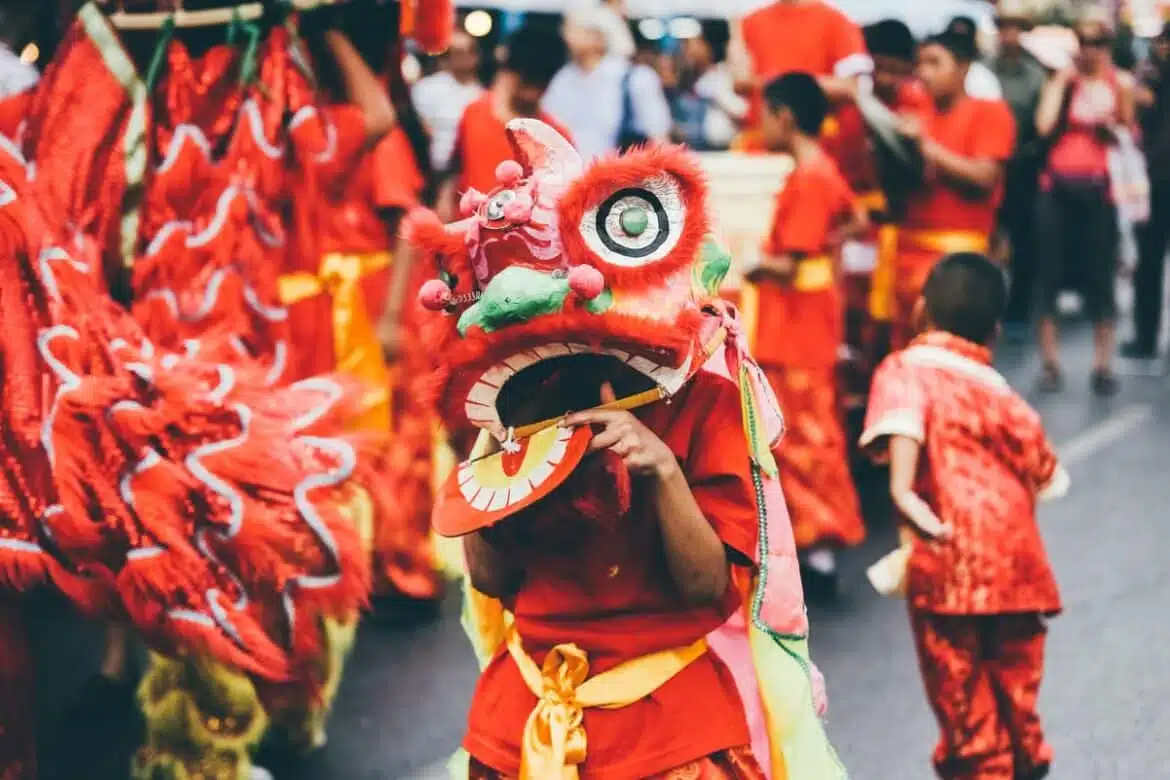This post is also available in: ![]() Deutsch
Deutsch ![]() Français
Français
This year, the Chinese New Year falls on the 22nd of January, which will take course for 15 days, until the following full moon. It is a time of celebration, prayer and most importantly (for us), food!
Also called the Lunar New Year, this annual celebration dates back to the 14th century BC, when the Shang dynasty ruled over China. The origin of the new year’s festivities originates from various legends. One of the stories is that a monster called Nian (“Year”) assailed villagers at the start of each year. However, Nian feared loud noises, vibrant lights and the red colour, which are the exact things villagers used to chase the beast away. This explains the predominance of the red colour in Chinese New Year festivities.
The new year celebrations are usually set between January and February, following the phases of the moon. According to the Lunar calendar, which is composed of 12 different zodiac animals, the year 2023 is dedicated to the rabbit. The rabbit is thought to be gentle and kind in nature but clever, predicting a calm and balanced year. One of the traditions of the new year includes thorough cleaning of one’s home to remove any lingering bad luck. This is a wonderful opportunity to adopt a clutter-free home for the new year!
Large family banquets and outdoor shows like firecrackers, fireworks and frequent dancing dragons are also part of the new year’s celebration. In Chinese culture, dragons symbolise power and good fortune, hence the dragon dancing parades through the streets. Foods like fish, fruit and spring rolls are not mere snacks but rather rich symbols of luck and wealth. The consumption of these foods is believed to invite good fortune and prosperity into your life.
Check out some of these traditional Chinese dishes and their symbolic meaning! Tangerines and Oranges
Tangerines, oranges and pomelo usually adorn family banquets during the new year festivities. While the Chinese words for orange or tangerine sound similar to the words for ‘luck’ or ‘wealth’, the almost golden colour of the citrus fruits indicate prosperity.
Dumplings (Jiaozi)
Dumplings are meant to resemble boat-shaped silver or gold ingots, called sycee, an ancient Chinese currency. Dumplings symbolise prosperity and wealth. The more you eat them, the higher are your chances to become richer in the new year. However, the filling also has its range of meanings as well. Cabbage and radish stuffing will raise your chances to have a good skin as well as mood. Stay nonetheless away from Chinese sauerkraut, which foresees a poor and difficult future. According to ancient legend, the more dumplings one eats, the more money one will have in the upcoming year. While pork is the most ordinary dumpling stuffing, you can also choose shrimp, chicken or vegetables.
Spring Rolls
Spring rolls are a favourite during the new yar celebrations as they represent wealth. According to a Chinese lucky saying, which is linked with spring rolls, is “黄金万两 (hwung-jin wan-lyang), meaning “a ton of gold”, implying that spring rolls look similar to gold bars!




